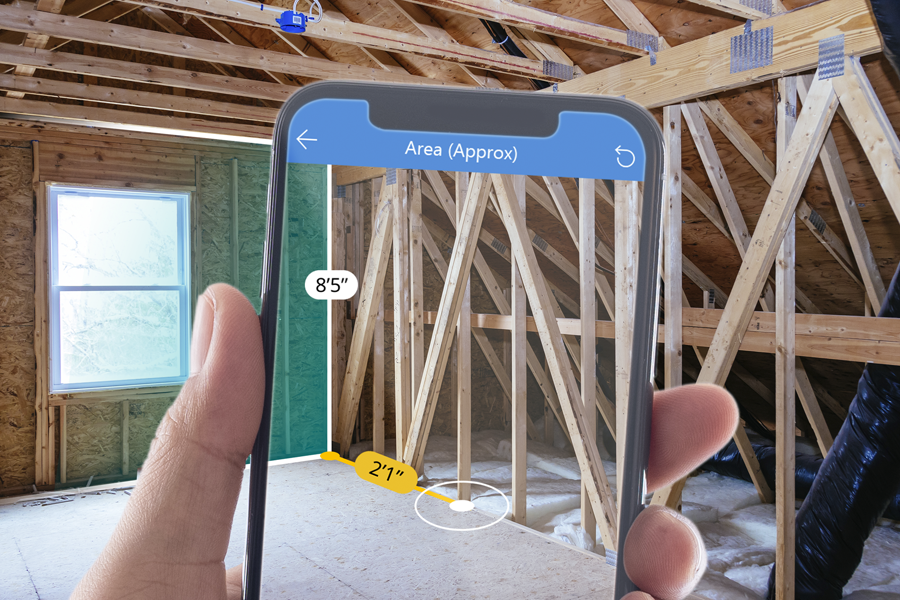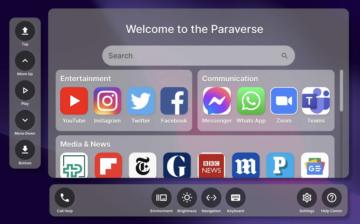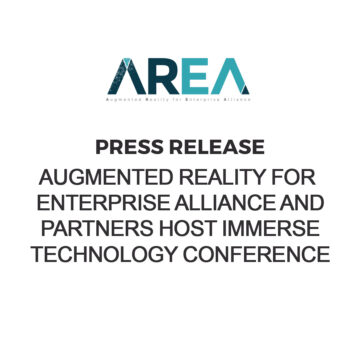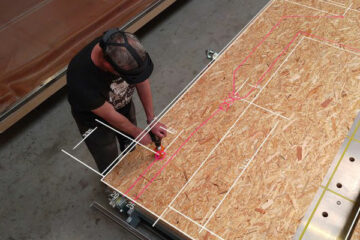Moreover, Uitz and Pile expect enterprise users to add those Augmented Reality / Mixed Reality capabilities themselves – without help from AR solutions developers.
The key is Microsoft Power Apps.
“Power Apps is a low-code, no-code application platform,” explained Uitz. “It enables anyone to quickly and easily build and deploy sophisticated applications by using drag-and-drop controls to pull in data from any data source.” Introduced in 2018, Power Apps got its first Mixed Reality capabilities in 2020.
“We added straightforward Mixed Reality capabilities that enable you to build sophisticated, device-centric applications that leverage a phone’s built-in sensors to use MR to see images and models in a space as well as measure things,” said Uitz. “We’ve seen many customers leveraging their mission-critical Power Apps business applications for huge improvements in their workflows.”
According to Uitz and Pile, the AR-enhanced Power Apps applications tend to focus on three areas. The first is sales team enablement. For example, salespeople are using Power Apps’ MR capabilities to help their customers visualize their products in their environment before they buy. A consumer packaged goods company salesperson could use AR to show a retailer how their product would look when installed in their stores and what it would mean in terms of incremental sales. That visualization can help close deals.
The AR visualization capabilities can be useful post-sales, as well. For example, a company can provide the installation team with images from various angles showing exactly where a product – visualized at real-world scale in their customer’s site through AR – needs to be installed.
Microsoft is also seeing its customers embrace the new AR capabilities for measuring applications. Armed with just a mobile phone, a flooring contractor can quickly measure an area to provide an accurate estimate of the amount of flooring needed for the space. Because it’s integrated with Power Apps, Dynamics 365, and Dataverse, it can be set up to support the entire business workflow.
“The user can open the Power Apps application, press ‘measure,’ take the measurements, press ‘submit,’ and the pricing calculations are done automatically, captured in the system, and an estimate email automatically sent to the customer,” said Uitz.
Another popular measuring use case is auditing. For example, users can use the measuring capability to confirm that a building is compliant with their local building code, including enough space for egress and sufficient lines of sight. This can save hours of time and effort doing physical measurements and recording data by hand.
“We’re all about democratizing Mixed Reality – making it another tool in the worker’s toolbox,” said Uitz. On top of that, Power Apps provides enterprise security and enterprise scalability, so a user-developed AR-enabled application can easily ramp up from a small, local trial to an enterprise-wide deployment without difficulty.
The democratizing of Mixed Reality extends to the hardware requirements, as well. Power Apps’ MR capabilities do not require a HoloLens; they work with any iPhone, iPad, or Android phone that supports ARKit / ARCore.
“The goal is to get companies to integrate MR capabilities into their mission-critical workflows to make their lives better,” said Uitz.
As these capabilities become better known, Uitz and Pile are expecting more Power Apps users to take advantage of the ability to: view and manipulate 3D content; overlay 3D content and 2D images onto the feed from the camera; measure distance, area, and volume using a device with AR; and identify spaces in the real world through an AR overlay.
Meanwhile, Microsoft is continuing to enhance the software to add additional industrial-strength features, and the Power Apps team is open to working with customers to add capabilities for their particular use cases.
“More often than not, it’s not a new thing that they want to do,” explained Pile. “It’s something that they’ve always done, but they want to do it faster, or at lower cost, or integrate into existing workflows. That’s where our primary focus is.”
Another key focus is getting the word out. Uitz, Pile, and the rest of the Power Apps team have been offering a variety of resources to increase awareness among customers and get them thinking about what AR capabilities can do for their operations. Readers interested in learning more can go here and here.
If the Power Apps team is successful, more enterprises will get their first AR experience, not from super-sophisticated “gee-wizardry” AR pilots, but from AR enhancements that deliver immediate value to their everyday solutions.
- AR Blog
- AR/VR
- blockchain conference ar
- blockchain conference vr
- coingenius
- crypto conference ar
- crypto conference vr
- extended reality
- Metaverse
- mixed reality
- Oculus
- oculus games
- oppo
- plato
- plato ai
- Plato Data Intelligence
- PlatoData
- platogaming
- robot learning
- telemedicine
- telemedicine companies
- The Area
- Virtual reality
- virtual reality game
- virtual reality games
- vr
- zephyrnet









